It’s Never too Late to Become Who You were Always Meant to Be | Kathy Bussert-Webb
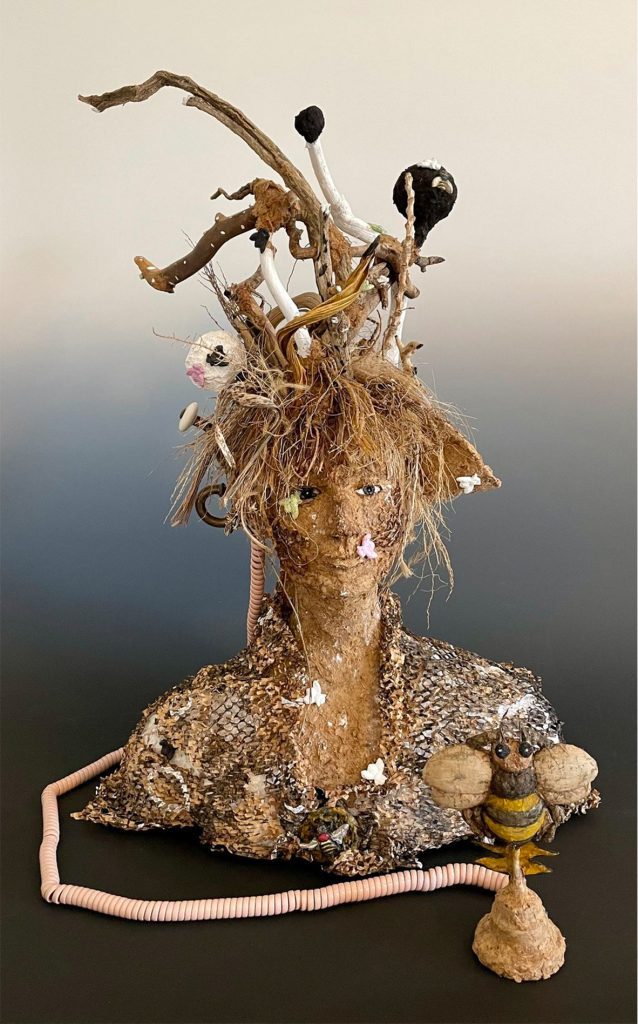
In this interview for Women in Arts Network, we sit down with artist Kathy Bussert-Webb, who transforms personal history, found objects, and natural elements into powerful visual stories. From a childhood shaped by trauma, working-class roots, and a deep connection to nature, she shares how art became not just her safe place but also her way of healing.
She opens up about how being bullied, struggling in school, and surviving abuse pushed her toward creativity and how, even after years in academia, she returned to her first dream: becoming an artist. In her words, every artwork tells a story, and through hiking, foraging, and rescuing broken things, she is also piecing herself back together.
Through this conversation, we learn that art can be a form of survival, a means of expression without words, and a way to find wholeness in what once felt shattered. Her journey reminds us that no matter where we start, it’s never too late to honour our inner child and turn pain into beauty.
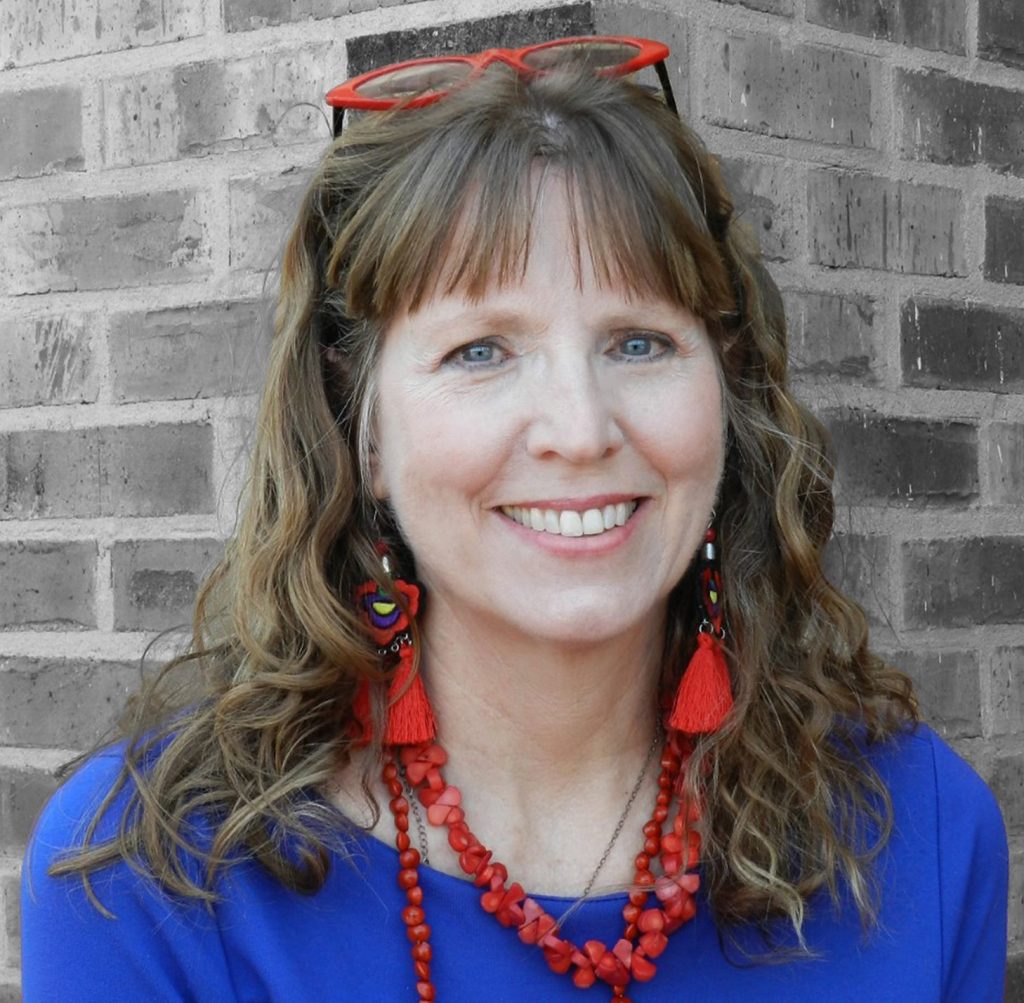
Kathy, an artist at Equinox Studios in Seattle, was a fellow in eight art residencies, including those in Spain and Costa Rica. She has won awards in national juried shows, had four solo shows, and published her art and writing in national journals. She was in the Peace Corps in Honduras, where she served as a beekeeper and public school teacher. Kathy received her MFA in 2022, two years after retiring from her professorial role. She earned a PhD in 1997 in Language Education. Her experience as a reading professor influences her art storytelling.
1. Can you tell us a little about yourself and your background?
My Indiana-born father was a machine repairman in a factory, and my Hungarian-born mother was a homemaker, baker, cook, and seamstress. Both were hoarders, and I inherited this trait, yet I have adopted hoarding as an art practice. My dad received his General Educational Development (GED) while serving in the U.S. Army in Germany, where he met my refugee mother, who had only a sixth-grade education. She received her GED when I was in graduate school. Although my parents didn’t possess much formal education, they were adept storytellers, which influenced me to tell a story in each piece I create. Additionally, my family and I often foraged for berries and mushrooms, and camped frequently in my home state of Indiana. These experiences inspired me to forage for art materials, focusing on nature as a theme.
I like finding twisted, crooked branches and broken objects because I want to make them whole, because at the same time, I’m making myself whole.
Kathy Bussert-Webb
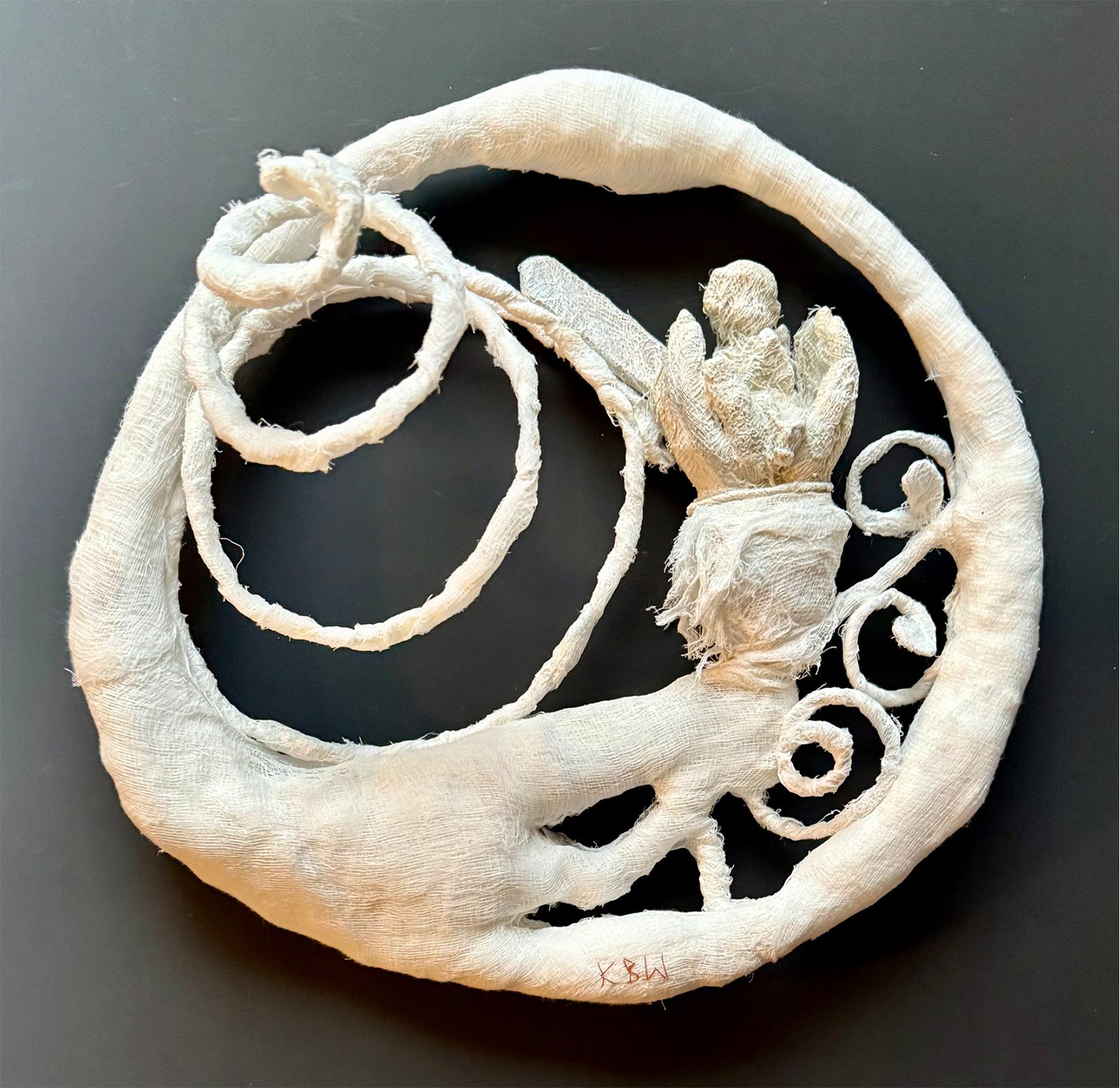
2. What inspired you to become an artist?
I never fit in school, and two boys brutally bullied me in third and fourth grades. I also struggled academically because I had experienced trauma at school and home, and was sexually molested by an elderly man. Art was the only subject in which I excelled, and it brought me peace. I could forget my trauma and shame when I was creating. When teachers asked us what we dreamed of being, I always answered, “Artist!” Later in life, my working-class upbringing caught up with me, and I thought I couldn’t survive financially as an artist, so I pursued an academic career. When I retired as a literacy professor in 2020, I immediately applied for a Master of Fine Arts (MFA) in visual art to honour my childhood dream. (Years ago, I read an article in which the author said we should have the career we yearned for when we were 11.)
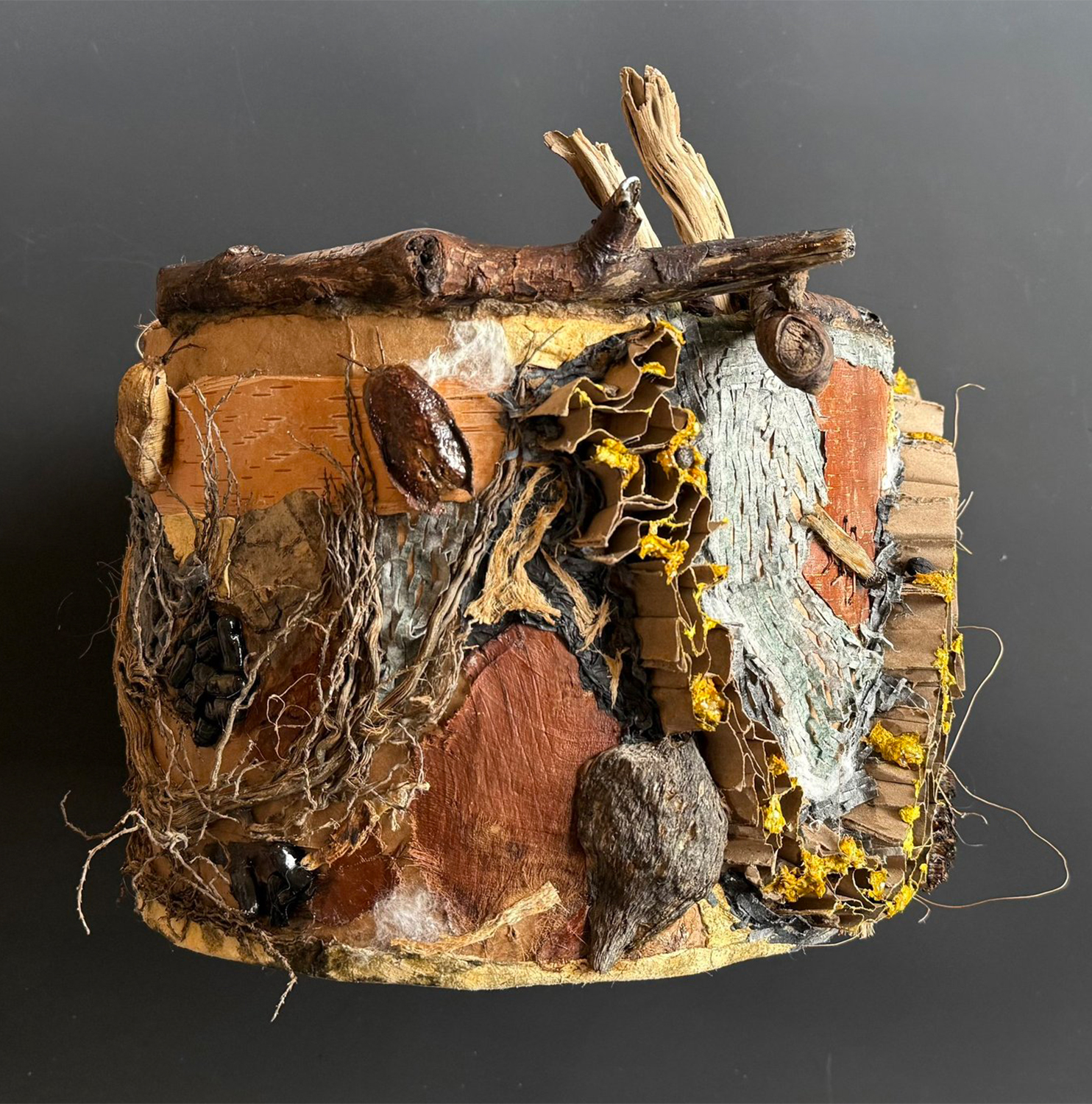
3. What is your creative process like from start to finish?
I’m a hiker and a thrift store aficionado. I enjoy finding twisted, crooked branches and broken objects because I want to make them whole, as I am also making myself whole. I’m healing. So, I’ll take these pieces and put them together to tell a story. I take into consideration the five art elements, but my focus is always on the story. For instance, in a recent piece, I combined a broken angel, a knife, a sprayer nozzle, and a hose, and used white cheesecloth to cover and unify the elements. The story of this piece is that nature, although harmed, comes back with such power, resilience, and beauty. She always wins. (This piece is entitled “Cycle”).
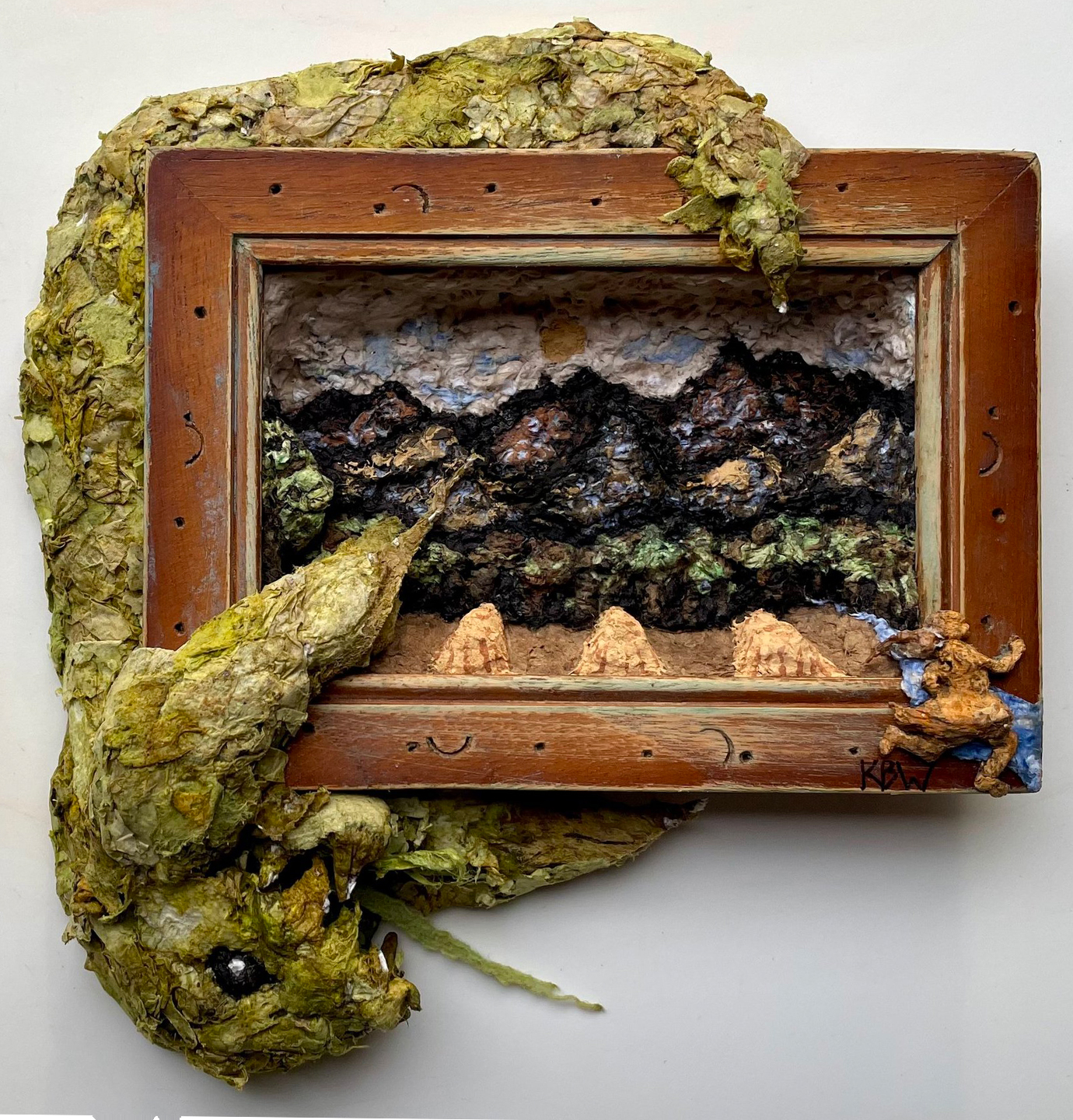
4. Where do you find inspiration for your artwork?
I find inspiration for my artwork through hikes in the woods and on beaches, as well as by searching for uncanny objects in second-hand stores. However, my past traumas have also served as a source of inspiration. I turn refuse into art, a metaphor for overcoming trauma.
Art was the only subject in which I excelled, and it brought me peace. I could forget my trauma and shame when I was creating.
Kathy Bussert-Webb
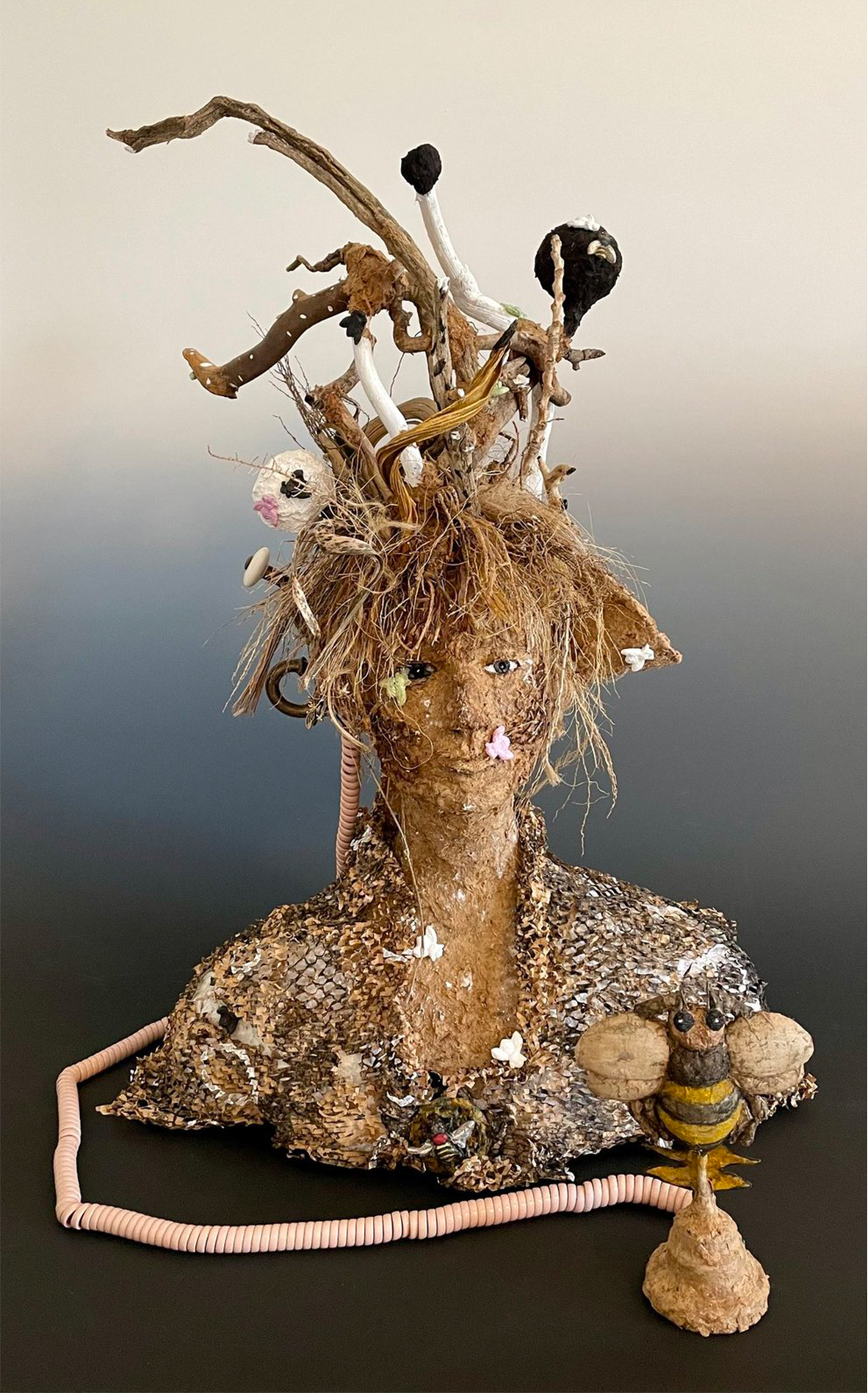
5. Can you tell us about a particular piece of art that holds special meaning for you?
“In One Ear & … ” is a bust of myself as a bee woman communicating with bees. I was a beekeeper in the U.S. Peace Corps, an international development organisation of volunteers, so I have always loved bees. Fast forward to 2023, when a bee fell into my papermaking vat and drowned. I felt remorse and guilt that I killed something I loved. I then started learning about the plight of bees due to insecticides and herbicides, and I thought I could do something to help my little friends.
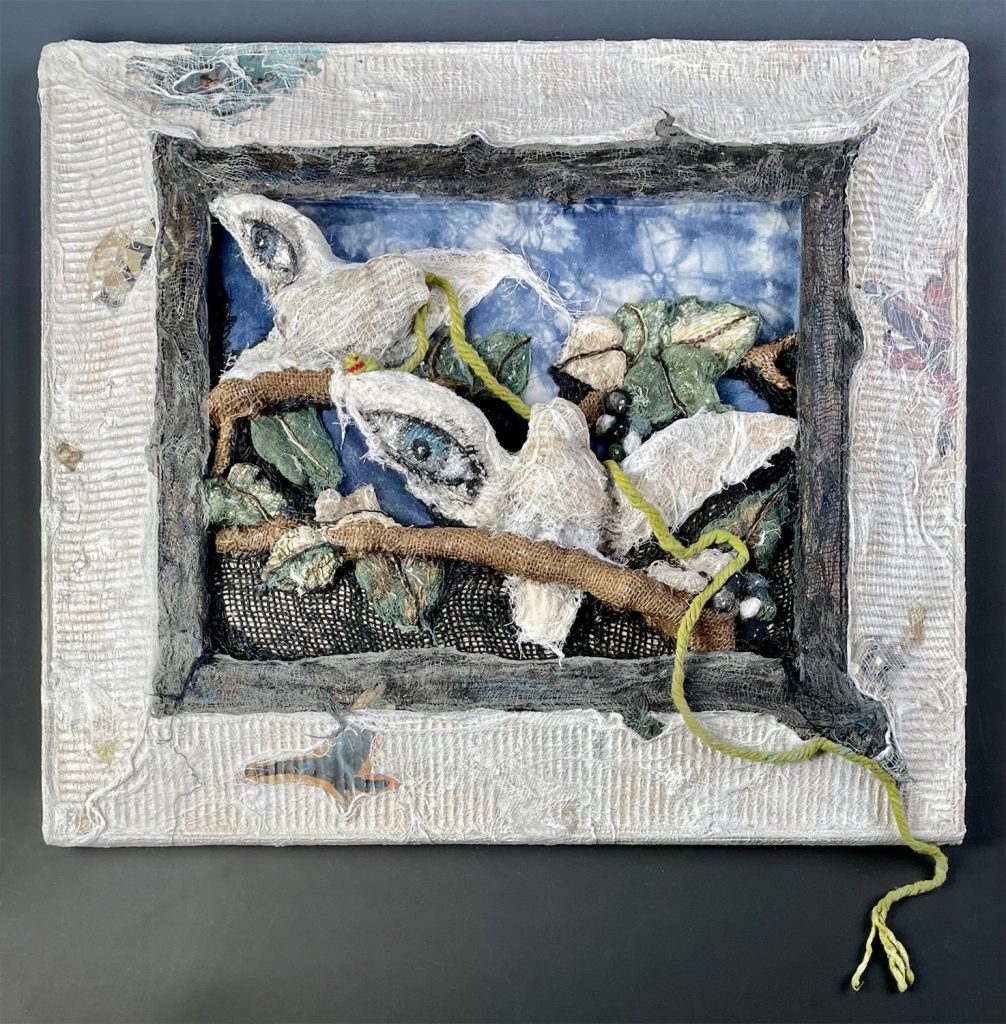
Through our conversation with Kathy Bussert-Webb, we have learned that art can be both a refuge and a form of reclamation. Kathy shows us how creativity can help us process trauma, reconnect with nature, and tell the stories we weren’t always able to voice. Her journey reminds us that healing isn’t linear, but it can be beautiful. Most importantly, she proves that it’s never too late to return to your dreams and that even broken things can become part of something powerful and whole. To learn more about Kathy, visit the links below.
